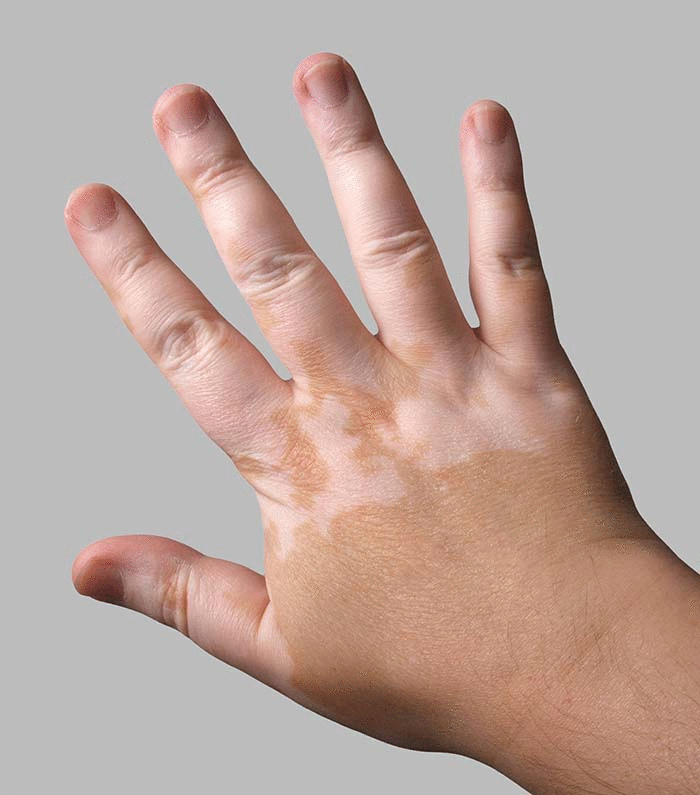How Vitiligo is Inherited and Influenced by Lifestyle Factors
Jun 25, 2023
3566 Views
In a world filled with despair, we must still dare to dream- Michael Jackson
We all know Michael Jackson as the legendary singer, songwriter, and dancer who changed the world of music and entertainment. But how many of us know that underneath all that glamor and stardom he was fighting a battle with himself? Yes, Michael Jackson was diagnosed with vitiligo. He faced a lot of criticism and speculation about his appearance, and he used makeup to cover up the uneven blotches of color caused by the illness. He revealed his condition to the public during an interview with Oprah Winfrey where he said that he was not trying to change his race or identity, but he was just coping with a disease that was very difficult to hide.
 June 25 is observed as World Vitiligo Day worldwide as a day to raise awareness and understanding of vitiligo, a skin condition that affects about 1-2% of the global population. Vitiligo causes patches of skin to lose their pigment, called melanin, creating a unique and beautiful pattern on the body. However, vitiligo comes with many challenges, such as social stigma, psychological distress, and lack of effective treatments. The date of June 25th was chosen as a tribute to Michael Jackson, who suffered from vitiligo and died on this day in 2009. Since then, World Vitiligo Day has become a global movement that aims to make a difference for those who live with vitiligo and create a more inclusive and compassionate world.
June 25 is observed as World Vitiligo Day worldwide as a day to raise awareness and understanding of vitiligo, a skin condition that affects about 1-2% of the global population. Vitiligo causes patches of skin to lose their pigment, called melanin, creating a unique and beautiful pattern on the body. However, vitiligo comes with many challenges, such as social stigma, psychological distress, and lack of effective treatments. The date of June 25th was chosen as a tribute to Michael Jackson, who suffered from vitiligo and died on this day in 2009. Since then, World Vitiligo Day has become a global movement that aims to make a difference for those who live with vitiligo and create a more inclusive and compassionate world.
Learn more to care more
Vitiligo is an inflammatory skin condition that causes loss of pigment in patches. It can affect any part of the body, but usually starts on the hands, feet, face, and areas around body openings. Vitiligo can also affect the hair, eyes, and mouth.
The exact cause of vitiligo is unknown, but it is believed to be an autoimmune disorder where the immune system mistakenly attacks the melanocytes, the cells that produce melanin, the pigment that gives skin its color. Some factors that may trigger or worsen vitiligo include:
- Genetic predisposition
- Sunburn or skin injury
- Stress or emotional trauma
- Exposure to certain chemicals or drugs
- Hormonal changes
Know your risk
Anyone can develop vitiligo, but some people are more likely to get it than others. Some risk factors for vitiligo include:
- Having a family history of vitiligo or other autoimmune diseases
- Having dark skin
- Being under 30 years old
- Having another skin condition, such as psoriasis or eczema
There is no cure for vitiligo, but there are treatments that can help restore some pigment to the affected skin or make it less noticeable. Some of the treatment options include topical creams or ointments, phototherapy or light therapy, laser therapy, transplant surgery, depigmentation therapy, etc.
Treatment effectiveness varies depending on the type, extent and location of vitiligo. Some treatments may have side effects, such as skin irritation, infection, scarring or increased sensitivity to sunlight. Therefore, it is important to consult a dermatologist before starting any treatment.
Caution is the parent of safety
Being an autoimmune condition, vitiligo is often triggered by certain factors. Limiting your exposure to such factors may help avoid any immune response related to vitiligo. These include:
- Limiting sun exposure- protect the skin from sun exposure by using sunscreen, clothing and hats
- Exposure to harsh/ toxic chemicals- take precautions while handling them
- High levels of stress- engage in relaxation activities
- Avoiding dryness and cracking of the skin- moisturize the skin regularly.
How Genomepatri can help you
By knowing your genetic predisposition for vitiligo, you can take proactive steps to reduce your lifestyle and environmental risk factors.
With the help of Mapmygenome’s Genomepatri, you can know if you or your loved ones are at risk of developing vitiligo.You can also get personalized recommendations for diet, exercise and supplements based on your genetic profile for many other health conditions as well. Mapmygenome also provides genetic counseling to help you better understand your predispositions and guide you to make informed choices for your health and wellness.
Vitiligo is a chronic condition that can affect anyone at any age. It is not contagious or life-threatening, but it can cause emotional and social distress. By understanding the causes, risk factors, treatment and prevention of vitiligo, people can cope better with this condition and improve their quality of life.
Michael Jackson was an icon of talent, creativity, and innovation, but he was also a human being who struggled with vitiligo. His story inspires us to be more compassionate and supportive of those who live with this condition. Whether you have vitiligo yourself, know someone who does, or simply want to learn more about it, World Vitiligo Day is an opportunity to join a global community of support and solidarity. Together, we can make a difference for those who live with vitiligo and create a more inclusive and compassionate world. As quoted by MJ himself, “There’s nothing that can’t be done if we raise our voice as one.”

